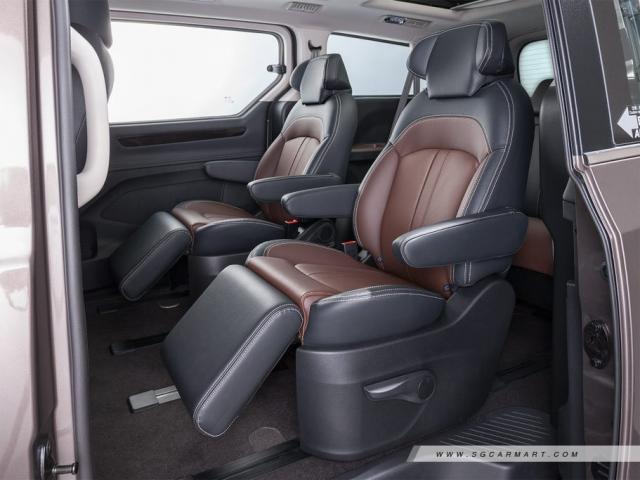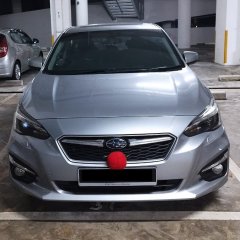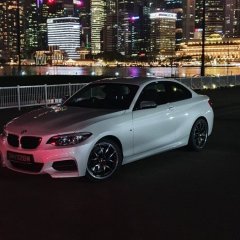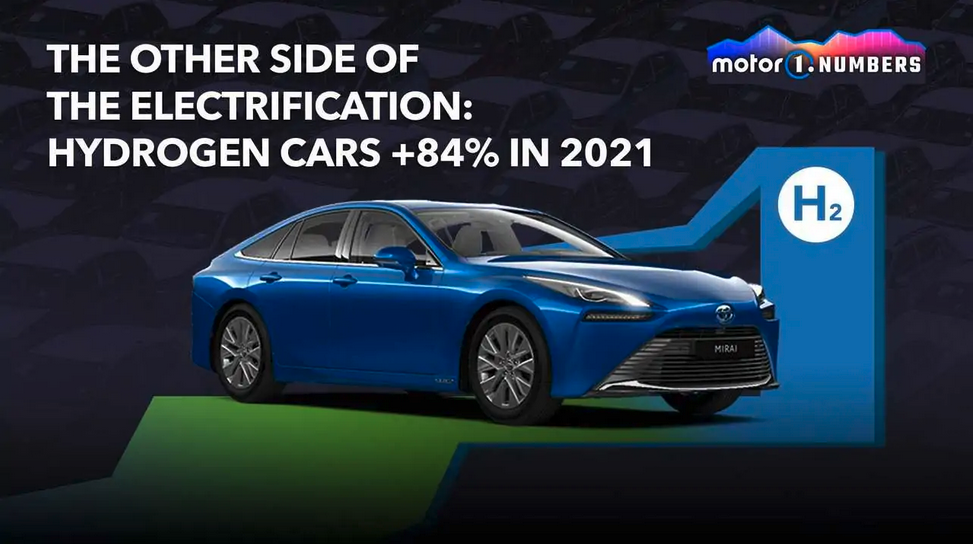Search the Community
Showing results for 'maxus' in topics.
-
saw the maxus Mifa 9 in white. Looks pretty good for a van/MPV type vehicle.
-
Yesterday afternoon went down to C&C to further look at the features of the vehicle I booked (MIFA 9) and was told that the price increase by another $5000/- to $258,999/- They adjusted the price after the Expo closed at 9.00 pm. Those who wants to book on Sunday will pay more by $5000/-. Don't tell me so many people booked Maxus MIFA 9 on Saturday ? Just a day different and the price shoot up by $5k or they advertised the wrong price on Saturday !!!!
-
Just booked the Maxus MIFA 9 (Pearl White) from C&C and will collect it at the end of June or mid-July depending on shipment. Booked not at the Expo as only can view the vehicle and too many people crowding the car and very distracting especially those with kids From Expo drive down to C&C Alexandra Rd and take time to view the car with ease and a test drive. Signed the agreement and paid the deposit.
- 280 replies
-
- 18
-

-
Maxus MIFA 9
-
Expect more China EV brand to hit our shore in the next 2 years, as the big wave have just started. Ultimately, only the fittest will survive on our tiny island (since we have a fixed quota for new car registration each month/year). Another point to ponder: Is PA changing their game plan (betting heavily on Chinese EVs) with the declining market share of Audi? Chinese EV brand Xpeng to be launched in Singapore by second half of 2024 Xpeng, a Chinese electric vehicle (EV) brand backed by German carmaker Volkswagen, will be launched in Singapore by the second half of 2024. Sources with close knowledge of the negotiations said the EV maker appointed Premium Automobiles as its distributor recently. This will be the second Chinese EV brand that Premium is representing, after Zeekr from Geely. The first Xpeng model to retail in Singapore is expected to be the G6, a sport utility vehicle that is about the same size as the Tesla Model Y. This is likely to include a single motor version capable of covering 580km on a single charge. Premium Automobiles did not respond to queries on Xpeng when approached for comment. The dealership, which is also the retail partner of German car brand Audi, would say only that Zeekr remains on track to be launched here by the third quarter of 2024. The Straits Times has also contacted Xpeng for comment. Xpeng’s impending foray into Singapore comes as the EV adoption rate here rises. In 2023, EVs made up 18.1 per cent of total car registrations, up from 11.7 per cent in 2022 and 3.8 per cent in 2021. The Chinese brand is regarded by industry experts as among the strongest contenders against Tesla, although it delivered just 141,600 units in 2023 – a fraction of the 1.08 million units managed by the American EV brand. It sells left-hand drive models in China, Denmark, the Netherlands, Norway and Sweden. On March 11, the South China Morning Post reported that Xpeng plans to launch right-hand drive models in the second half of 2024 as part of its global expansion strategy. Volkswagen holds a 5 per cent stake in the company from Guangzhou, China, and the companies are working to develop two VW-branded models for the Chinese market. Automotive consultant Say Kwee Neng said Xpeng is one of three Chinese EV brands – the other two being Nio and Li Auto – that are well regarded for their products’ technology, design and level of sophistication. “There is a lot of hype behind these three brands, but ultimately, it will be down to the representative in Singapore to bring in the right model mix and be relevant. We have already seen how BYD has broken down walls to make Chinese EVs desirable to consumers here,” Mr Say added. Chinese EV brand BYD was the fourth-biggest selling brand in Singapore in 2023, outselling the likes of Nissan (fifth), Hyundai (seventh) and Tesla (ninth). Xpeng joins at least five other Chinese brands that are slated to enter the Singapore market, including GAC Aion, which will be launched in April by Vincar. Their addition will more than double the number of Chinese car brands from the four in 2023 – BYD, MG, Maxus and Ora. Mr Say believes that Chinese EV brands are hastening their move into Singapore to build up global credibility as they try to break into European markets. Automotive analysts expect EV sales in China to grow at a slower pace in 2024, even as domestic EV brands and Tesla have been cutting prices to boost demand. This slowdown in demand is pushing Chinese EV brands to look abroad for sales, some industry insiders believe. The other Chinese EV brands slated to launch here are Smart, which Cycle & Carriage will roll out in the first half of 2024; Chery, which is represented by Vertex Automobile; Seres, which is imported by Hong Seh; and Neta, which Vincar has the rights to distribute.
- 37 replies
-
- 13
-

-
Went to see Maxus EV MPV and saw ORCA taking over Mit showroom. Mitsubishi has long gone down the drain a decade back. Now Subaru is the next once those China brands go full steam in Asia.
- 78 replies
-
- mitsubishi
- sales
-
(and 2 more)
Tagged with:
-
Maxus is now taking orders for the E Deliver 3, its first compact electric van. Deliveries are expected to commence before the end of the year. Two battery options are available: 35kWH and 52.5kWh, giving a range of up to 98 miles and 150 miles, respectively. Both batteries can be charged from 0-80% in 45 minutes, using a rapid charger. All versions are powered by the same electric motor, providing 122PS and 255Nm. The Maxus E Deliver 3 is available in three variants: a short wheelbase panel van, a long wheelbase panel van and a long wheelbase platform chassis The short wheelbase pane van has a cargo capacity of 4.8 cubic metres and a maximum payload of 905Kg. The long wheelbase provides 6.3 cubic metres or cargo space and has a maximum payload of 1,020Kg. The platform chassis has a 1,202Kg payload capacity. Standard equipment includes air conditioning, electric windows, electrically adjustable door mirrors, a multifunction steering wheel and an eight-inch touchscreen infotainment system with support for Apple CarPlay and Android Auto. The E Deliver 3 also features a reversing camera with rear parking sensors, cruise control, six floor-mounted strapping rings for the cargo bay and a solid partition between the cargo bay and cabin.
-
Was quite surprise to chance upon this ride when reading on some car news last night. Did not notice its availability over here before that at all. Really low key as it was never publicized in any way at all, as should have. http://www.sgcarmart.com/new_cars/newcars_overview.php?CarCode=12237 http://i.i-sgcm.com/new_cars/cars/12237/brochures/brochure_20180124082626.pdf http://www.carbuyer.com.sg/index.php/news/1456-sg-motorshow-2018-this-chinese-mpv-costs All along I had noticed that Maxus in Malaysia has a MPV line under G10 which was not brought over here when C&C clinched the dealership. I had always thought the ride looks good as it has similar shape and finishing as Starex which is also not really available here as quite ex at S$170k. Anyway, people up north are quite fortunate as they have options that are equivalent to Alphard/Vellfire at substantially lower costs. So I am quite happy to read that since Jan/2018, the Maxus G10 SE is available over here under 2 trims at $140k and $150k. I do not know the exact difference between the 2 trims except for the electric tailgate (with leg motion) and the 18" wheels and sun roofs, but standard features such as TPMS, 360 camera, and adaptive cruise control are quite useful. And the ride comes with 6-speed gear mated to a 2L turbocharged engine that provides a respectable century sprint of 10.2 seconds which I read somewhere. The ride is long at 5.1m but not very tall at 1.928m, and very wide at close to 2m. Finishing wise, I would think better not to expect too much as it is definitely in Starex category. It should be more of a workhorse, like Biante, with plastic parts all over. Of course reliability is not proven at this moment as it is very new. But I do not foresee any issues as it is carried by C&C. Anyway it is not really possible to get a full-size MPV under AD right now other than Alphard/Vellfire/Elgrand, except for Saangyong Stavic which seems no longer available in sgcarmart now. If willing to go PI, the triplets and Stpwagon are potential candidates, but then again they are really a size smaller. Biante also seems to be obsoleted for good now. But I do not foresee this ride to sell well, as not many families would need such a big ride to begin with. But definitely happy to more options in this climate especially with the new VES resulted in a lot of models being pulled from the market. Really good luck to the C&C people.
-
Well caveat emptor: YQC (2nd video) said that Maxus had grossly overstated the MiFa 9 consumption figures. Instead of range being 560km, one could only get 400km, and that's on a very good day. Actual range is more like 300km. Also, the car doesn't start well when they had it as their media car, stating that the car doesn't start 1/5 times they start the car. He lamented that it was relatively spartan as well, and it's more for chaffeur duties than personal use.
-
This new Maxus Mifa 9 is going to do well if there is proper charging infra. Really getting atas.
-
Foton brand. There are also a few electric bus from them running on our road (on trial). More model to come. For electic commercial vehicles (mainly buses and vans), we have BYD, DFSK, Foton, Golden Dragon, Maxus, Yutong, etc. For passenger vehicles, BYD is the biggest player here currently, with just 2 new model, the E6 and Atto 3. If you include China owned brands, then we also have MG (MG5 and ZS) and Volvo (C40 Recharge and XC40 Recharge), which are all MIC Just like Maserati, ah Beng ah Seng also can buy, but will quickly sell them when experiencing bill shock for maintenance and repair.
-
Don't play play : MAXUS G10 EXECUTIVE Price: $113,999 - $123,999 | Distributor: Cycle & Carriage Singapore (Maxus) CAR MODEL TOTAL POINTS Maxus G10 Executive 40.9% Renault Scenic 23.9% Toyota Prius+ Hybrid 35.2% You could say that a car like the Toyota Alphard is an example of a default choice when it comes to large MPVs, but if you are in the market for one, do not discount the Maxus G10. Marketed as a luxury vehicle, the G10 is an MPV from leading Chinese automaker SAIC. It is also the first passenger vehicle under the Maxus brand, which has been around for a few years. So what exactly makes it a winner this year? For starters it is big, with a wheelbase of 3,198mm. These numbers translate to a cabin that's ridiculously roomy and easily accessible via an automatic sliding door system on both sides of the car that can be controlled via the centre console. With a height of more than 1.9m, you could also walk around inside quite easily. The two large sunroofs overhead help make the cabin bright and airy, too. And apart from easily accessing the cabin, you also sit higher than in most cars, giving you a good, clear view of the road ahead. On the move, its 2.0-litre turbocharged engine, which produces 210bhp and a very useful 330Nm of torque, provides it with ample verve. Most importantly for families, the G10 also rides as smoothly if not smoother than its rivals. Combined with a reasonable price tag, it's tough to not recommend the Maxus G10 to anyone looking to buy a large MPV, and tougher to not crown it the king of its segment this year.
-
another story of Geely with Proton.. I like below text: In 2006 Malaysia rejected Geely investment plan of 100million, then 11 years after its rejection, Geely would return to Malaysia in 2017 to take control of Proton. Ironic isn’t it? In that 11 years, Geely went from being a maker of industrial garbage that Indonesian taxi drivers didn’t want to drive to a maker of fine cars like this Geely Xingyue L. https://www.wapcar.my/news/in-2006-geely-wanted-to-invest-rm-100m-in-malaysia-who-rejected-it-to-protect-proton-and-perodua-31481 In 2006 Geely wanted to invest RM 100m in Malaysia, who rejected it to protect Proton and Perodua Hans·Aug 2, 2021 02:51 PM For many Malaysians, Geely is a brand that’s synonymous with Proton. The Chinese brand that in June 2017, came out of nowhere to become a permanent fixture in our collective consciousness, owning 49.9 percent of our national carmaker. But what if I tell you that Proton is actually Geely’s second attempt to enter Malaysia? Back in 2006, Geely came to Malaysia to partner with alloy wheel manufacturer Tan Sri Cam Soh, whose Alado Bumi Sdn. Bhd. had already gained some traction with Chery, to invest in a local assembly (CKD) operation. 2005 Geely CK. Such a terrible looking car. Was there any reason for Proton/Perodua to be concerned? To do this, Geely partnered with Soh’s other company Information Gateway Corp Sdn Bhd (IGC). IGC is to contract Johor Bahru’s Oriental Assemblers to build 10,000 Geely cars per year. Oriental Assemblers - who were they? Located in Jalan Tampoi in Johor Bahru, Oriental Assemblers was once a General Motors plant making Vauxhall / Opel models, before the American firm sold it in 1980. Early generation Honda Accord and Civic models at Oriental Most Malaysians however will remember Oriental Assemblers as the company that built Honda cars between the ‘70s and the late ‘90s, when its sister company Kah Motor was the franchise holder for Honda cars in Malaysia. Honda CR-V was the first CKD Honda produced at the Pegoh plant, in 2003. Dankaku means (trial) pre-production. Photo taken in 2002. Seiji Kuraishi (3rd from left) was CEO of Honda Malaysia then. Honda Malaysia would later take over the distributorship from Kah Motor in November 2000 and by 2003, production of Honda cars were transferred to Honda’s own Pegoh plant in Melaka. After that, Oriental Assemblers switched to assembling Hyundai cars, which were sold under its sister-company Oriental-Hyundai’s Kah Bintang dealer network, and briefly, contract manufacturing for Mercedes-Benz cars until Mercedes-Benz Malaysia (then known as DaimlerChrysler Malaysia, taking over from Cycle and Carriage Bintang) setup its own plant in 2005. Today, Oriental Assemblers is owned by the Berjaya group, renamed to Berjaya Assembly Sdn. Bhd. It now does contract assembly for Maxus and a few other local rebadged Chinese light commercial vehicles. Geely’s offer to Malaysia Back to Geely. The proposed investment was worth a not-very-small RM 100 million. Geely wants to make Malaysia its right-hand drive assembly hub, eventually exporting to 42 right-hand drive countries. Geely CK1, front and rear is an ugly mash up of the then current W203 Mercedes C-Class Contract manufacturing at the Oriental Assemblers plant was only the start. A new dedicated plant for Geely was to be considered further down the line. The plan was to CKD the Geely CK1, a very ugly, badly copied W203 Mercedes-Benz C-Class, which was stilll current then. Malaysia’s response to Geely The mid-2000s was a period when Malaysian policy makers were adapting to the ASEAN Free Trade Agreement (AFTA) - now superseded by ATIGA (ASEAN Trade in Goods Agreement) – that it had signed with Thailand and Indonesia. Import duties for cars with at least 40 percent regional content were abolished but the sneaky Malaysians secretly plotted to move the goal post back home. While import duties were indeed slashed, Malaysia raised excise duties for imported cars – essentially keeping prices of cars (and car tax collection) status quo. Officially, Malaysia says its national car policy is no more but - and it’s a big but - it grants car makers that do R&D here – a thinly veiled reference to Proton and Perodua, since Malaysia is too small for others to do any real R&D here – close to 100% excise duty discount, essentially keeping national car privileges intact while paying lip service to free trade agreements. Also read: Why is a Proton X70 cheaper than a Honda CR-V by RM53k? What's the difference in taxes? The 2000s were a low point for Proton It made little difference, Proton continued to lose market share. Between 2002 and 2006, Proton’s sales had fallen by nearly 50 percent! From a record high of 214,985 units (a record that still stands today) to 115,706 units. Meanwhile, Perodua was doing better, improving from 127,478 units to 155,419 units in the same 5-year period, usurping Proton for the sales crown. Also read: Once unbeatable, Proton lost its No.1 rank not because of Perodua, but the PC. How? Curiously, sales of the Perodua Kancil actually increased as it aged, as explained here. Malaysia feared that allowing cheap locally-produced Geely cars into Malaysia would erode Proton’s (and to a certain extent, Perodua’s) position even further. Despite the RM 100 million commitment from Geely, the Malaysian rebuffed Geely’s proposal with two ridiculous requirements – the cars made cannot have engine capacities below 1.6-litre (essentially Proton and Perodua’s market), and 80 percent of the production must be exported (meaning just 2,000 cars can be sold in Malaysia annually). The latter was yet another moving of the goal post by the Malaysian government, as the previous requirement was 70 percent. Proton in the 2010s. Exports peaked in FY2010, with 22,000 units (including CKD kits) Geely’s response Annoyed by the moving of the goal post, Geely cancelled all talks with Malaysia and took the money to Indonesia, appointing PT Gaya Motor, which operates a plant just outside of Jakarta, as its contract manufacturer. The Geely CK1 was launched in Indonesia in May 2007. Locally-assembled Geely MK models joined October 2009. So how did Geely performed in Indonesia? Terrible – you can’t expect any other outcome right? Geely MK At its peak in 2012, Geely sold 1,232 units (for reference, Proton Indonesia sold 2,263 units then). Few private buyers bought a Geely, with most of the sales coming from taxi operators. None went back to place more orders. Geely MK taxi in Indonesia The quality of the Geely MK was horrendous, with some taxi drivers reporting that the clutch and brake pedals could become loose after repeated hard use! Some threatened to strike if they are not allowed to go back to their previous Toyota Limo (Indonesian market taxi-specs Toyota Vios). Note the Limo badge instead of Vios By 2014, sales had dropped to just 193 units (while Proton sold 523 units) and Geely pulled out of Indonesia one year later. Proton held out slightly longer, pulling out in 2019 but sales had already dropped to low two digit figures in the years before. Once blocked by China, Geely was not supposed to exist 11 years after its rejection, Geely would return to Malaysia in 2017 to take control of Proton. Ironic isn’t it? 11 years later, Geely says "You have no choice but to shake my hands now" In that 11 years, Geely went from being a maker of industrial garbage that Indonesian taxi drivers didn’t want to drive to a maker of fine cars like this Geely Xingyue L. As explained in my previous post, it’s overly simplistic to conclude that Chinese brands had it easy because of their huge domestic market. If that’s the case, the 1.3 billion-population India’s Tata would’ve rivalled Great Wall Motor and the 270 million-population Indonesia’s (fourth biggest in the world) Timor national car project wouldn’t have failed. There was one more important point that I had to skip in my previous post, to keep the word count tight. Coming from a country that mollycoddles Proton and Perodua, many assumed that Geely is China’s pride and therefore received huge support from the Chinese government, when the opposite is true. That’s right, in its early days, Beijing was actively stopping Geely from making cars. Geely's founder Li Shufu and the rundown building that served as Geely's first factory - making refrigerator parts Consistent with the China’s philosophy of a centrally planned economy, Geely, which is not owned by any state-owned enterprises (SOE, their version of GLC), was seen by Beijing as an overly ambitious village pumpkin poking its nose into something it's not supposed to. Early days of China’s automotive policy, Geely to be shutdown Although the Shanghai-VW project – production of the first modern car in China – began in 1983, a formal automotive policy would only be put in place in 1987. Beijing’s original plan to accelerate its automotive industry centered on just 6 state-owned companies, colloquially referred to as the “3 big 3 small plan” (三大三小), 3 SOEs each for large and small vehicles. The SAIC-VW joint venture plant in Anting, Shanghai In the ‘3 Big’ group is First Automobile Works (FAW), Second Automobile Works (now known as Dongfeng Motor), and Shanghai Automotive Company (now known as SAIC). In the ‘3 small’ group is Beijing Automobile Industry (now known as BAIC), Tianjin Automobile Industry, and Guangzhou Automobile Industry (now known as GAC Group). 1983 VW Santana (Passat B2), the first modern car produced in China. Domestic brand cars would only follow much later Political cadres assigned to these SOEs were supposed to run a profitable joint venture (JV) with foreign manufacturers and pick Western technology (‘steal’ if necessary). SAIC for example, partnered with VW and GM. In a complex arrangement, foreign partners also spread out their risk and extend their sales network across the very big China by having more than one partner. Toyota for example, counts both GAC and FAW as its partner, offering slightly different models to their two ‘local wives.’ Foreigners joke that key to a successful car business in China is to have two very capable wives, one for each key market region, but at the same time keep the two wives far apart from each other. FAW-Toyota gets the Corolla, GAC-Toyota gets the Levin - both identical cars except for the front-end design It is why the Toyota Corolla Altis is sold under two different names in China – Corolla and Levin, and why Volkswagen has such a confusing array of SUVs and sedans, one each for their SAIC-VW and FAW-VW joint ventures. China doesn’t like surprises and Geely is a surprise. Founder Li Shufu came from a farming village near Taizhou, province of Zhejiang, far away from the industrial and political centres of Shanghai, Guangzhou, and Beijing. In China, some say that the sharpest business people come from Zhejiang. Do you know who else came from Zhejiang? Jack Ma (Alibaba) and Ding Lei (NetEase). To make cars, you need a license, which Geely didn’t have back in the early ‘90s. There are two important idioms that all Chinese businessmen believe – yibu yibu (one step at a time) and daole qiaotou jiuguo qiao (you cross the bridge only when you reach it, meaning don’t succumb to analysis paralysis). The first seeks to mitigate risk, the seconds encourages risk taking. Together, these two believes form a yin-yang balance that pushes Chinese entrepeneurs forward. Geely's entry into the automotive business is via 2-wheelers With the 4-wheeler business locked out, Li went one rung lower, making cheap scooters in 1993. Years later, an opportunity would appear when the Deyang Prison Vehicle Factory (yes, a factory in a prison. Remember this is Communist China), which used to make military trucks, was closed down. Li bought over the factory and voila – he now has a license. Geely Haoqing, Geely's first car was a rebadged licensed copy of a Daihatsu Charade In 1997, Geely built its first car, the Geely Haoqing, a licensed copy of another licensed copy, Tianjian-FAW’s Xiali, a rebadged third-generation Daihatsu Charade. But the manufacturing license Geely had doesn’t allow it to make larger, more profitable sedans, and sales were limited only to certain regions. To sell his cars throughout the country, Li needed approval from Beijing. Li once penned a poem, “There were but a few sincere, wise, brave children who walked barefoot on the ice in order to realize the dream of a Kingdom of Cars.” Geely's cringe-worthy appearance at the 2005 Frankfurt Motor Show. Thankfully, their motor show exhibits are a lot better today In 1999, when China's top economic planner Zeng Peiyan visited Li’s hometown in Zhejiang, Li pleaded with Zeng saying, "I would not regret even if we fail, but could you please give us an opportunity first? If we succeed, we can help explore a new road to develop China's auto industry, and if we fail, we are not wasting the nation's money." And that last bit, my dear Malaysian readers, is the biggest difference between Geely and our (quasi) national brands and why they are contended with being mere ‘jaguh kampungs’. Typical of the Chinese, Zeng didn’t give a clear yes/no answer but an impression has been made. Remember it’s yibu yibu. 15 years later, SAIC was still making the same VW Santana. Beijing was getting impatient At the same time, Beijing was getting impatient with the original members of the elite 3 Big 3 Small grouping. These state-owned companies appear to be getting too comfortable leveraging on their foreign partners, effectively becoming rent seekers of foreign technology. Beijing was in a hurry to grow a competitive Chinese car and if these state-owned companies are moving too slowly, Beijing will introduce a new player into the game, just to shake things up. SAIC had partnered with VW for 15 years but it’s still making the same VW Santana. It was only after Geely was allowed to make sedans that SAIC bucked up and acquired Britain’s MG Rover and Maxus. Again, compare this very meritocracy-based decision versus our national car projects. Some would argue that Malaysia is too small to have more than 2 national car manufacturers. That’s true, but don’t focus on one tree and lose sight of the forest – was the same meritocracy used in developing Proton’s vendors, dealers, and management ranks, at least in the crucial ‘80s and ‘90s when Malaysia had a small window of opportunity to get ahead of Korea, Thailand, and Indonesia? Also read: Once poorer than Malaysia, how Korea’s car industry progressed further than ours? There’s no point saying that things are different at Proton today, the train has left the platform. Geely Xingyue Back to Geely. Two more years would pass and by 2001, one year after China’s entry into the World Trade Organization, China started liberalizing its economy and Geely was finally granted an automobile manufacturing license, the first private company in China to have it. Later, Great Wall and Chery would follow suit – each with equally inspiring stories of tenacity and wit. The rest of Geely’s story is what you know today. Not bad for a company that Beijing didn’t recognize, whose money was rejected by the Malaysia, and whose cars were hated by Indonesian taxi drivers.
-
Can't be lah! Mazda cars no performance one!😅 Must be high performance badge with M, so it may also be Maserati. Unless it means that van brand Maxus...
-
Source: https://www.motor1.com/news/574229/hydrogen-powered-car-alive-sales-up-84-percent/ While most analysts and consumers are talking about the shift from internal-combustion cars to electric ones, there’s another side to the green-car story that's quite unknown. Hydrogen fuel-cell cars showed modest but interesting figures last year, suggesting battery-electric power isn't the only path to the future. The data collected by JATO Dynamics indicates global sales of hydrogen fuel-cell cars totaled 15,500 units around the world in 2021. Although it is very small compared to the sales of other fuel types, the demand increased by 84 percent compared to 2020, when 8,400 fuel-cell vehicles found new owners. Even more impressive is the increase compared to pre-pandemic levels, which stands at 103 percent. Niche Segment, For How Long? It is extremely rare to see a hydrogen fuel-cell car on the streets. Since 2011, approximately 41,700 hydrogen vehicles have been sold – roughly the same number of cars sold in China by Volkswagen Group in just four days. Prices for these vehicles are high, and the lack of a strong hydrogen infrastructure contributes to the low sales figures. Also, there are just very few choices for hydrogen fuel-cell vehicles right now. To that point, 98 percent of the sales volume for hydrogen cars last year corresponded to only two models: the Hyundai Nexo and the Toyota Mirai. The remaining sales came from the phased-out Honda Clarity and a minuscule number of test cars from brands such as Renault, Maxus, BMW, and Peugeot. Nevertheless, future plans for hydrogen fuel-cell vehicles are in contrast to current sales volumes. Following the introduction of the second-generation Toyota Mirai, other automakers such as BMW and Volkswagen announced the development of hydrogen-powered vehicles along with a series of new battery-electric cars. For instance, BMW is planning to make 100 hydrogen test units of the X5 this year. Kia announced plans for a hydrogen fuel-cell lineup in 2028. Volkswagen Group is leaving all the fuel-cell research and development to teams at Audi, which already has more than 100 people involved. Daimler and Volvo trucks are also betting on this technology for their larger commercial vehicles. South Korea Leads The Way, By Far Until these in-development vehicles come to life, the statistics show South Korea is by far the largest hydrogen fuel-cell car market. The figures for 2021 put this nation ahead of all others by a significant margin. Thanks to the dominant position of Hyundai and the expansion of hydrogen infrastructure, South Korea accounts for 55 percent of the global volume. Sales jumped from almost 5,800 units in 2020 to just over 8,500 units last year. And it all comes down to one vehicle: the Hyundai Nexo. It's the best-selling hydrogen fuel-cell vehicle in the world, with 92 percent of all 9,208 global Nexo sales taking place in its home market of South Korea. The Nexo went on sale in 2018 but it's not the only hydrogen fuel-cell vehicle of note. The second-generation Toyota Mirai went on sale in 2019, and sales increased by a whopping 257 percent in 2021 as a result. Interestingly, the Mirai’s main market in 2021 wasn't South Korea, but actually, the United States. 2,629 units were sold there, followed by Japan at 2,438 units and 730 vehicles throughout Europe.
-
Rare van spotted: MITSUBISHI Maxus G10. Mitsubishi has changed its logo. The editors are sleeping. Is there a MITSUBISHI Maxus G10? It’s as if there’s a Maserati Hyundai Elantra . More info on the MITSUBISHI Maxus G10 van: http://www.cyclecarriagecv.com.sg/maxus_g10_van.html The article: http://news.asiaone.com/news/singapore/buyers-holding-back-commercial-vehicle-prices-set-tumble At Cycle & Carriage, the price for a Kia K2500 is now $49,988, a Citroen Berlingo costs $51,988, and a Mitsubishi Maxus G10 starts from $48,988 - all $30,000 lower than before, and with the COE rebate pegged at $15,000.
-
When I went down ystd about closing time, I touched the handle and got shocked by static electricity on the handle, which proved to be the only shock of the car. Ingress, egress and quality is much better than the Maxus G10 on the 2nd floor. Other than that, it's a splendid car barring the lower roof at the back. Sadly I don't have 200k lying around and spending 200k on this doesn't seem financially wise 😕
-

All new 2021 Kia Carnival / Sedona GUV
Thaiyotakamli replied to Thaiyotakamli's topic in Korean Talk
Maxus G10 is decent -
Maxus van with private registration plate, relatively rare. Have to say the MPV is huge in metal.
-
If budget is top concern, then suggest you check out Maxus G10. It's priced very affordably, and there's tons of space. Nothing comes close. Space-wise, Ody and Triplets are almost on par. Triplets have more airspace (height) so you feel spacious. But Ody is longer, and i think it has more boot/luggage space. Note that triplets and Maxus will not be able to go under some old MSCP because of height limit.
-
If your kids are in TAF club, and they are still in pri sch, then i suggest you get a vehicle with more space. We have a Wish that has served us well, bought 3 mth after my son was born. Now in sec 1 and approaching 1.7 m, he's been complaining very cramped for a while already. Outlander still got 2.4L AWD, but the more popular model now is 2.0L FWD only. Slightly better FC for 2.0, but also slightly less power. If you're not tight on budget, then I'll suggest you check out (besides Elgrand): - Previa/Estima 2.4 - Ody 2.4 - Sharan 2.0T - Sorrento 2.2 Diesel (if you don't mind diesel) - Maxus G10 2.0T (if you don't mind China) These should all be more powerful than Triplets, and also more give ample space (much more than Outlander, and around Triplets'). If you're keen on 7-seater SUV, and need space but don't want to pay a king's ransom, then Sorrento is good. 3rd row space is better than Audi Q7 and Volvo XC90. But it's diesel... And if you want power, then Sharan should have sufficient. Maxus looks good on paper, but it's new and not proven, and you'll need to have the appetite for Chinese products. For Elgrand's price, you can also check out Alphard/Vellfire, lower grade or PI ones. Got the space too, but FC might be about the same as Elgrand - not too good...
-

Car with cheapest horsepower in SG
fungyee77 replied to Thaiyotakamli's topic in General Car Discussion
Interesting list. Actually, from a depreciation pa/hp, both the Stinger ($47.1) and the Cupra ($47.2) appear to be more "cost effective" than the VRS 245 ($48.1). Also, good to note that all 3 are cheaper than the previous hp/$ champion Forester XT. I suppose the i30N will also be on the list once the pricing / OMV is confirmed. That said, Maxus does stick out like a sore thumb at #4 ... For alignment with the intents of people who would reference such a list for carbuying decisions, may be useful to filter by hp >200 (to eliminate cars like Cerato, Elantra) and perhaps by weight (to eliminate outliers like the Maxus) ?- 18 replies
-
- 2
-

-
Shopping for something that is truly practical? Why not also consider the Maxus G10? Whether it is seating for nine, or ferrying enough luggage for an entire family's extended holiday, this people carrier can do it all. With 215bhp from a 2.0-litre unit, this ferry has enough push to make sure you're not left behind on the roads as well. Watch our full video review of to see if this could be you next mass transit option!


.png)




















